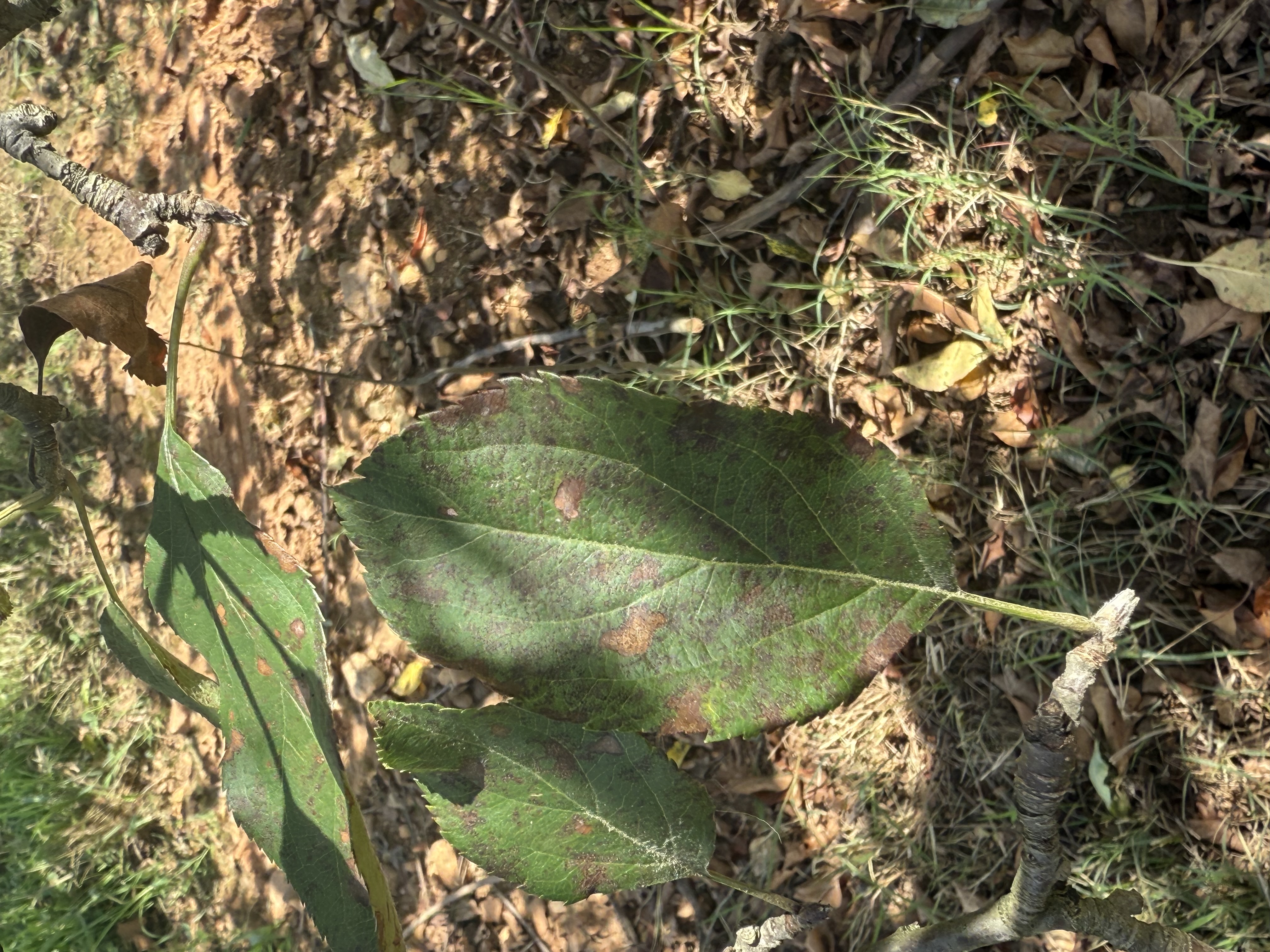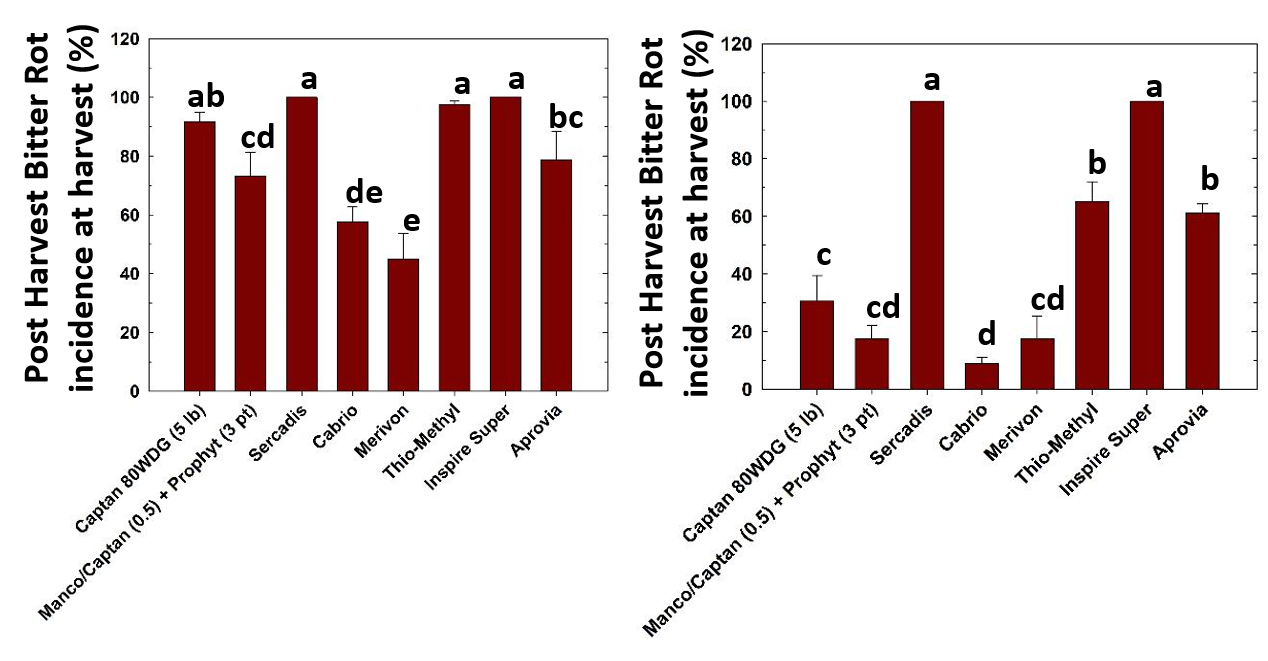Apple Disease Update: Week of July 27, 2025
go.ncsu.edu/readext?1084884
en Español / em Português
El inglés es el idioma de control de esta página. En la medida en que haya algún conflicto entre la traducción al inglés y la traducción, el inglés prevalece.
Al hacer clic en el enlace de traducción se activa un servicio de traducción gratuito para convertir la página al español. Al igual que con cualquier traducción por Internet, la conversión no es sensible al contexto y puede que no traduzca el texto en su significado original. NC State Extension no garantiza la exactitud del texto traducido. Por favor, tenga en cuenta que algunas aplicaciones y/o servicios pueden no funcionar como se espera cuando se traducen.
Português
Inglês é o idioma de controle desta página. Na medida que haja algum conflito entre o texto original em Inglês e a tradução, o Inglês prevalece.
Ao clicar no link de tradução, um serviço gratuito de tradução será ativado para converter a página para o Português. Como em qualquer tradução pela internet, a conversão não é sensivel ao contexto e pode não ocorrer a tradução para o significado orginal. O serviço de Extensão da Carolina do Norte (NC State Extension) não garante a exatidão do texto traduzido. Por favor, observe que algumas funções ou serviços podem não funcionar como esperado após a tradução.
English
English is the controlling language of this page. To the extent there is any conflict between the English text and the translation, English controls.
Clicking on the translation link activates a free translation service to convert the page to Spanish. As with any Internet translation, the conversion is not context-sensitive and may not translate the text to its original meaning. NC State Extension does not guarantee the accuracy of the translated text. Please note that some applications and/or services may not function as expected when translated.
Collapse ▲ As ‘Gala’ harvest nears, it’s time to start focusing on PHIs and final fungicide applications prior to fruit being harvested. It’s also time to commit to keeping the sprayers running at the very least in orchards that still have fruit to be harvested. While it’s just about too late to apply Omega and Aprovia which provide good control against bitter rot and GLS, for cultivars that will be harvested in August, they remain good options for apples harvested in September and October. Rather than a long post this week, here are some bulleted management options for your consideration:
As ‘Gala’ harvest nears, it’s time to start focusing on PHIs and final fungicide applications prior to fruit being harvested. It’s also time to commit to keeping the sprayers running at the very least in orchards that still have fruit to be harvested. While it’s just about too late to apply Omega and Aprovia which provide good control against bitter rot and GLS, for cultivars that will be harvested in August, they remain good options for apples harvested in September and October. Rather than a long post this week, here are some bulleted management options for your consideration:
- The final spray prior to harvest, apply Merivon or Pristine (0 day PHI) in tank mixture with a half rate of captan (0 day PHI). The graphs below show postharvest incidence of bitter rot following preharvest fungicide applications every 14 days (graph on left) or 7-10 days (graph on right). Trees were sprayed 1 or 2 days prior to harvest. On extended intervals, Merivon provided significantly better control of bitter rot, and even on 7 to 10 day intervals, pyraclostrobin (one of the actives in Merivon) provided better control of bitter rot than captan alone. If you have resistance to FRAC 11 (strobilurins-Pristine, Merivon, Luna Sensation, Sovran, Flint) apply the high rate of captan if possible prior to harvesting.

- Don’t forget about Topsin (or generic alternative) prior to harvest. Topsin has a 1 day PHI on apple and while it didn’t provide extended control during the postharvest period, in previous field trials it performed ok on GLS and bitter rot associated with GLS when applied on 7-10 day intervals only. Topsin provides good control of flyspeck/sooty blotch.
- With the exception of Cevya, other DMI fungicides registered on apple have a 14 day PHI. The newer DMIs also perform well against Marssonina leaf blotch (a.k.a. apple blotch). If you have ‘Rome Beauty’ apples or other cultivars where MLB has been an issue in the past, consider including a DMI with captan or Omega fungicide. Remember that DMIs provide no control against GLS and bitter rot in NC.
- If you are nearing your captan limits for the year, or grow for Gerber, consider rotations of captan followed by Omega (or generic equivalent) on a 7-10 day interval. Omega isn’t as efficacious against GLS or bitter rot associated as captan, but in rotation with captan, it help with control and keep captan residues lower. Remember that Omega has a 28 day PHI.
As usual, please get in touch with any questions-either directly with me or through the portal!


